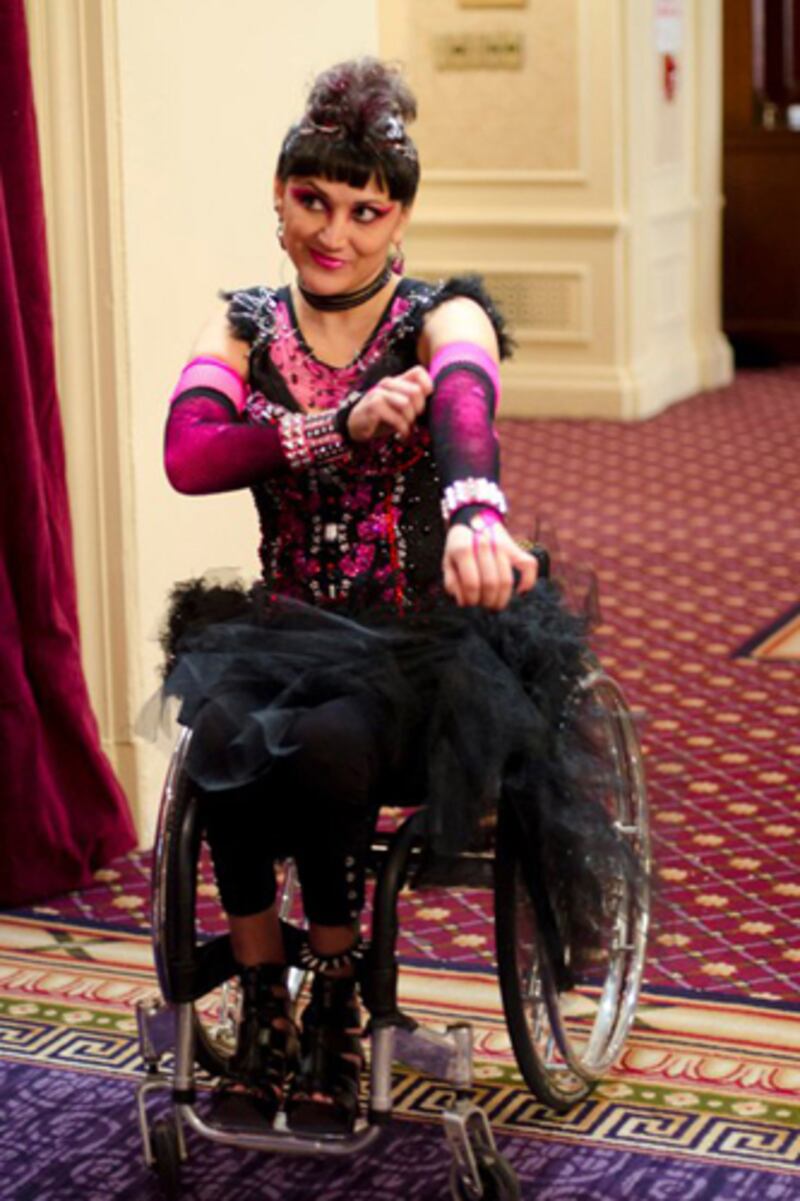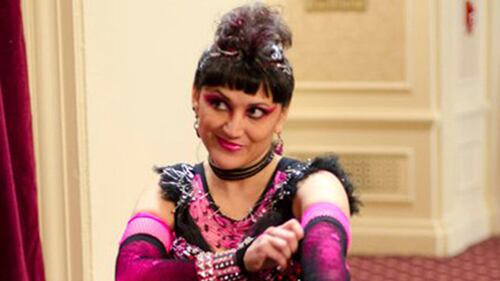“Hello, my name is Auti Angel and I’ll be your angel for today.” This is a line I use quite often, even at auditions, where I use it as my slate. It’s a great icebreaker.
Breaking into the entertainment industry as a Hispanic female has been challenging for me. Add disabled to the mix, and my work has been cut out for me.
As a young girl, I saw the struggles my father faced as a Hispanic actor and martial artist in the early 1980s. Back then, Hispanic roles were few and far between, and if you did land one, more often than not it was a stereotypical one. My father, for example, played Gina’s killer in Scarface. Yes, Scarface is a great film, but it also portrays Latinos as drug lords and people who commit vicious crimes. Most of us know that these characters aren’t real, but these were the roles given to Latino actors. It wasn’t until Edward James Olmos in Stand and Deliver (1988) and Antonio Banderas in Take the Lead (2006) that positive images of Latino males started being shown on the big screen.
The same scenario applies to disabled performing artists. We too have been stereotyped and portrayed in the media in such a way that it has affected how people interact with us. We haven’t been allowed to fit into society as “normal” human beings. But that’s just what we are: normal human beings. We just have one slight physical difference in appearance.
I have gone to many auditions where I didn’t land the role because I didn’t look disabled enough. “Not disabled enough? What is that supposed to mean?” I would think to myself. I remember one casting in particular where the producers were trying to choose between me and another actor with a disability. In the end, they went with the other actor because I was a double threat, Hispanic and disabled. The producers said they loved me, but they couldn’t use me in the project because I was a double minority and that they were only allowed to represent one minority at a time.

Here’s one example of how movies have portrayed the disabled: Million Dollar Baby (2004), an incredible film with an awesome director, Clint Eastwood, and a horrible ending. Maggie (Hilary Swank) overcomes one challenge—becoming a woman boxer—but (spoiler alert!) when she is paralyzed from the neck down, she has her coach help her take her life. She can’t handle the cards she was dealt. That isn’t a good conclusion for anyone who is a quadriplegic.
My best friend is a C-4/C-5 quadriplegic who depends on around-the-clock care. She’s also the most beautiful and incredible woman you’ll ever meet. She too was into martial arts before her tragic car accident, but that didn’t stop her from continuing to live life to the fullest.
For me, things changed when I got to be part of the new film Musical Chairs, a project I loved working on. The film tells the romantic tale of two New Yorkers who come together through their mutual love of ballroom dancing, before a tragic accident changes their lives forever. The Latino character, Armando, dedicates himself, along with a group of colorful misfits, to helping his lover, Mia, overcome her painful challenges and dance again.
Musical Chairs portrays diverse situations in such a positive light, with a wonderful depiction of the diverse world we live in. The film contains positive Latino leading roles, a beautiful disabled transgender actress, a unique disabled vet, and a disabled young Hispanic lady who is like a quiet storm—me!
I am thrilled that people in the industry are finally moving toward more accurate representations of the society we live in. A change in how the media portrays us is long overdue, and it’s about time we started teaching acceptance of the differences in the world and embracing the whole human race.






